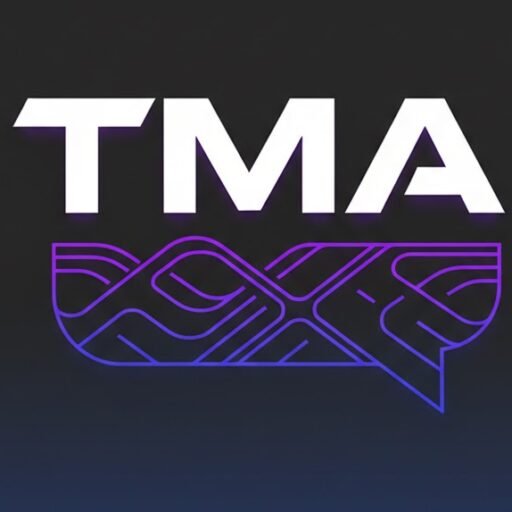Market Pulse
As the blockchain ecosystem continues its inexorable expansion, the vision of a truly interconnected, multi-chain world moves closer to reality. However, this promising landscape has long been shadowed by the inherent vulnerabilities of cross-chain bridges, which have historically been prime targets for exploits leading to billions in lost assets. As of November 2, 2025, a significant paradigm shift is underway, with cutting-edge security advancements now fortifying these crucial conduits, fostering greater trust, and accelerating the adoption of seamless interoperability across diverse blockchain networks.
The Imperative for Seamless Interoperability
The proliferation of Layer-1 and Layer-2 solutions, each optimized for specific use cases – from high-throughput DeFi to privacy-centric applications – has made a multi-chain future inevitable. Users and developers alike demand the ability to move assets, data, and even smart contract calls effortlessly between these disparate environments. Without robust interoperability, the blockchain landscape remains fragmented, hindering capital efficiency, limiting composability, and stifling innovation. Early solutions, often relying on centralized or semi-decentralized multi-signature schemes, served as necessary precursors but came with significant security trade-offs.
Fortifying the Bridges: New Security Paradigms
The latest generation of cross-chain bridges is implementing a multi-layered approach to security, moving beyond simple attestations to incorporate advanced cryptographic techniques and robust operational safeguards. This evolution is critical in building confidence, especially for institutional players eyeing the burgeoning digital asset space.
- Decentralized Validator Networks: Many modern bridges now utilize large, independent sets of validators that collectively secure transactions, minimizing single points of failure. These networks often employ economic incentives and slashing mechanisms to ensure honest participation.
- Zero-Knowledge (ZK) Proofs: Integrating ZK technology allows bridges to verify the validity of transactions on a source chain without revealing sensitive data or requiring the target chain to process the entire transaction history. This significantly reduces the data burden and potential attack surface.
- Optimistic and Fraud Proofs: Similar to optimistic rollups, some bridges operate on an ‘assume valid, challenge if fraudulent’ model, where transactions are posted and given a dispute period. Fraud proofs allow anyone to challenge and revert invalid transactions, providing a powerful decentralized security layer.
- Time-Locks and Circuit Breakers: Implementing predefined time delays for large transfers and automated circuit breakers that can temporarily halt bridge operations in response to detected anomalies adds crucial layers of defense, allowing time for review and intervention during potential attacks.
- Formal Verification & Extensive Audits: A growing number of bridge protocols are investing heavily in formal verification methods to mathematically prove the correctness of their smart contract logic, alongside continuous, rigorous third-party security audits and bug bounty programs.
Driving Institutional and Developer Adoption
The enhanced security profile of cross-chain solutions is proving to be a game-changer for attracting institutional capital and fostering deeper developer engagement. Traditional financial institutions, wary of the systemic risks associated with past bridge exploits, are now more amenable to exploring tokenized assets and cross-chain liquidity strategies. For developers, a secure and reliable interoperability layer unlocks unprecedented potential for building truly decentralized applications that can leverage the strengths of multiple blockchains, creating more resilient and feature-rich user experiences.
Conclusion
The journey towards a truly interconnected blockchain world has been fraught with challenges, primarily around security. However, the current advancements in cross-chain interoperability and bridge security represent a pivotal moment. By embracing decentralized validation, advanced cryptography, and proactive risk mitigation, the industry is building a more resilient and trustworthy foundation for the multi-chain future, unlocking new avenues for innovation and widespread adoption across the global financial landscape.
Pros (Bullish Points)
- Significantly reduces systemic risk and financial losses from bridge exploits.
- Increases capital efficiency and liquidity across disparate blockchain networks.
- Fosters greater innovation and composability within the DeFi and Web3 ecosystem.
- Attracts institutional participation by mitigating historical security concerns.
Cons (Bearish Points)
- Complexity of new security solutions may introduce unforeseen attack vectors.
- High development, auditing, and maintenance costs for advanced secure bridges.
- Regulatory uncertainty still looms for cross-chain services, potentially hindering growth.
- User experience for bridging can still be fragmented despite underlying technical advancements.
Frequently Asked Questions
What are cross-chain bridges?
Cross-chain bridges are protocols that enable the transfer of assets, data, and smart contract calls between two or more distinct blockchain networks, facilitating interoperability in the multi-chain ecosystem.
Why is cross-chain bridge security so critical?
Bridge security is paramount because these protocols often hold significant value in custody, making them attractive targets for malicious actors. Past exploits have led to billions in losses, eroding user trust and hindering adoption.
How are new cross-chain bridges improving their security?
Modern bridges are enhancing security through decentralized validator networks, advanced cryptographic proofs like Zero-Knowledge (ZK) technology, optimistic fraud proofs, implementation of time-locks and circuit breakers, and rigorous formal verification and auditing processes.






